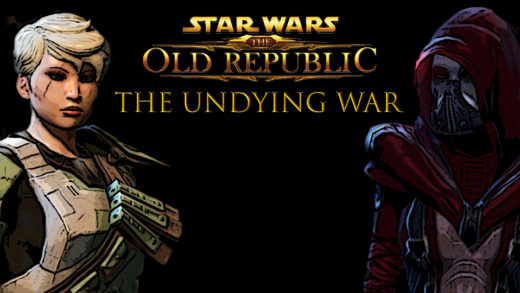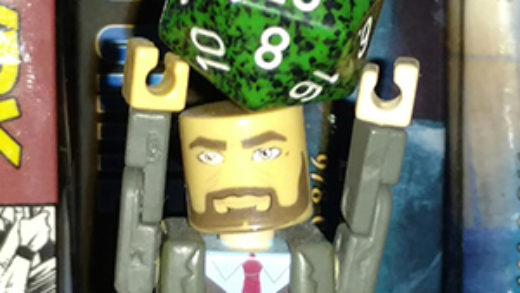We’re pretty close to the Valentine’s Day holiday and that means for the past week I’ve seen hearts plastered most places I visit. Even my Friendly Local Game Store has a Valentine’s Day sale. Why not put a little love in your game?
Firstly, A Word on Consent
As always, different people will have their own comfort levels and it’s important that the table communicates early and often about where they are and where they’re not OK with something. Having a romance thrust on an unwary player can cause needless friction at the table. As in real relationships, consent is key.
Flavors of Love
Cherry, cinnamon, honey… And they get warm when you blow on them! Sorry, wait, that’s flavors of edible massage oil. There are different styles of romance within a game. When putting romance in a game, consider some of the flavors: a one-night stand, a brief crush, long-term relationship, long-distance yearning, or heated love/hate affair. Utilizing varied types and levels of love can ensure that romance in the game feels dynamic and more real.
PC/NPC Romance
This is the most common sort of romance I’ve seen in a game. The player character has a dalliance or develops (or was created with) a relationship with a GM-controlled character. The GM may be juggling multiple love interests for different characters or, perhaps, multiple romances for a single player character. It’s important that these NPCs aren’t strictly there to stroke a player character’s (or player’s) ego but they also shouldn’t be added to a game as a device for constant player action (that is, having the loved one kidnapped or killed). I touched on possible options in my Character Families post. The romance can introduce game bonuses and positives rather than negative actions to spur the characters. It’s also OK to let the players take the reigns of their relationship story and direct it within the game. This helps take some of the creative burden from the GM and may lead a campaign to previously unmapped locations (literally and/or figuratively).
PC/PC Romance
Slightly rarer is the shared romance of player character and player character. While this may occur more often if the players are romantically involved in real life (see Real Life Relationships, below) PC to PC romance can be trickier to navigate. Even the most ardent of role-players can get their character’s feelings mixed up with their own. So it’s crucial that communication is in place to make sure the players are comfortable with they way the other player may be acting in and out of game. The rest of the table should also be comfortable with the players’ actions and the romance between the two characters should not allowed to become a spotlight-stealer from the other player characters.
If the players are enjoying themselves then shared PC romances can make a game seem all that more alive. The character romance may also give additional role-playing or character development ideas. A few years ago, I was a player in a Fate Dresden Files game. My character was a Scion of a demon and a different player’s character was the embodiment of a muse. In game, neither character knew what they were but we used the romance between the two characters to further develop the in-game secrets of said characters. For my character, the love quelled his inner demon and made him less violent; while for the muse, the relationship began to bring out her powers. These character development decisions were not the original trajectories we had planned for the characters, but felt more organic when in the situation.
In an Adventure, Not the Adventure
In addition to character development, romance (be it between PC and NPC or PC and PC) can be used within an adventure—without the capture or threat of harm for the romance be the catalyst for an adventure. Though those involved in a relationship may protect each other or choose their lover over other characters, the relationship itself doesn’t have to be the thrust of an adventure. Let the interactions between romantic characters be woven through small decisions.
The Love Triangle
Sometimes two characters are enamored with another character. This can be any mix of PC and NPCs. While this may lead to the rivals arguing, it should rarely come to blows. Instead, a good love triangle can bring the rivals into one-up-man ship, competing with each other to prove they’re the most deserving. As for the love interest; they may be watching the two with amusement, concern, or indifference. These can be difficult to run as a GM as it can lead to players outside of the triangle not receiving as much attention or the love triangle becomes too subtle and goes unnoticed or forgotten.
Real Life Relationships
Sometimes players or the GM and a player are romantically involved outside of the game. While there should be a level of separation between the game table and real life, this does not always occur. PCs between the two may become involved (or may start out in a relationship). As a GM, I don’t disallow such romances, but I do suggest that PC/PC romance not be a direct reflection of the real life romance. If the characters become a reference point for the real life relationship, it can sometimes also become a release for any difficulties in the relationship. And that’s not the kind of drama one wants at their table.
There may be instances where the two involved players may have a character in a romance with a separate character. Not only is it important for consent and communication to occur, it’s also important that the two players talk on their own. If a character romance is causing any friction in real life, the tabletop romance should be pulled.


Recent Comments